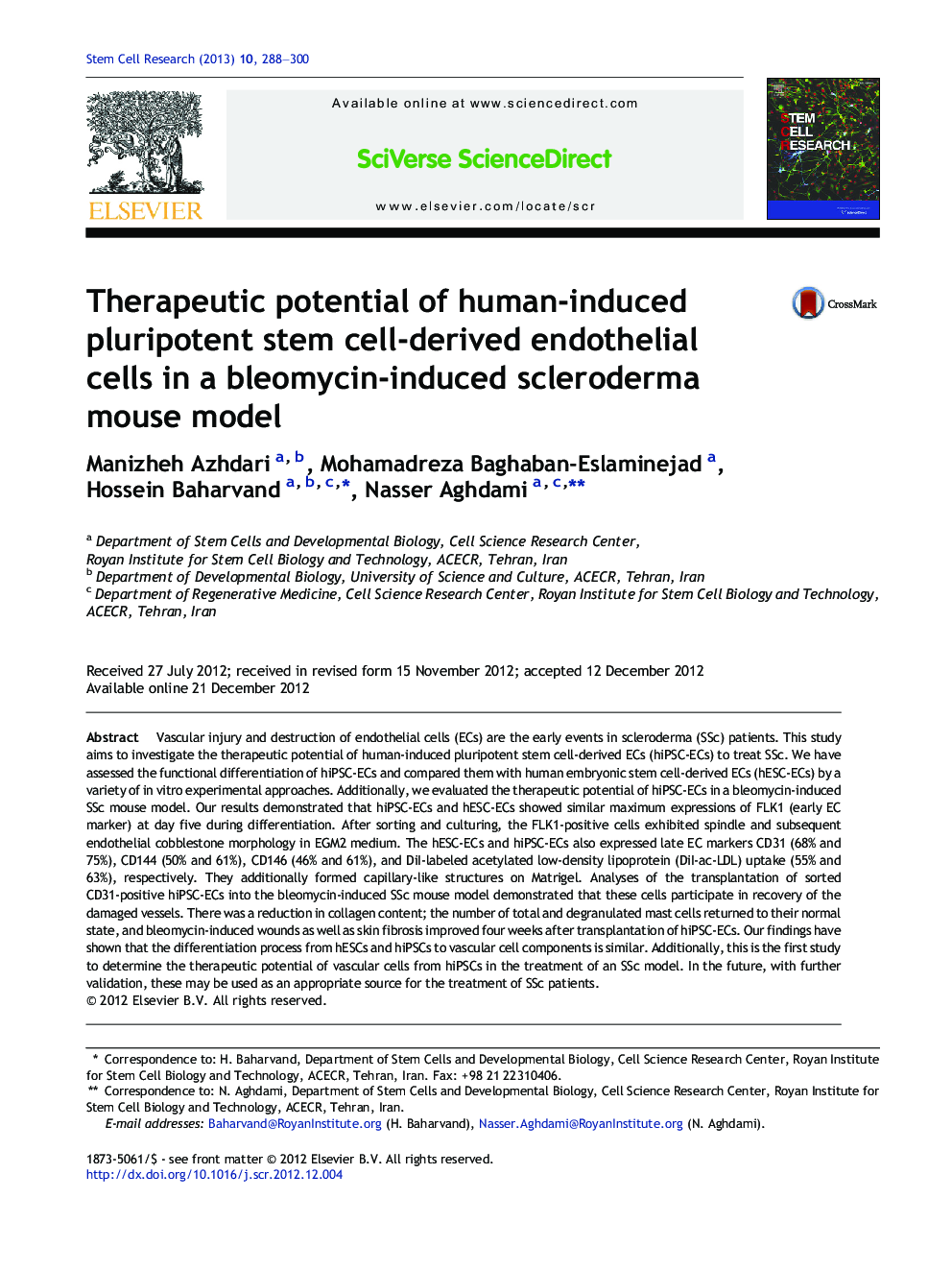| کد مقاله | کد نشریه | سال انتشار | مقاله انگلیسی | نسخه تمام متن |
|---|---|---|---|---|
| 2094199 | 1546036 | 2013 | 13 صفحه PDF | دانلود رایگان |

Vascular injury and destruction of endothelial cells (ECs) are the early events in scleroderma (SSc) patients. This study aims to investigate the therapeutic potential of human-induced pluripotent stem cell-derived ECs (hiPSC-ECs) to treat SSc. We have assessed the functional differentiation of hiPSC-ECs and compared them with human embryonic stem cell-derived ECs (hESC-ECs) by a variety of in vitro experimental approaches. Additionally, we evaluated the therapeutic potential of hiPSC-ECs in a bleomycin-induced SSc mouse model. Our results demonstrated that hiPSC-ECs and hESC-ECs showed similar maximum expressions of FLK1 (early EC marker) at day five during differentiation. After sorting and culturing, the FLK1-positive cells exhibited spindle and subsequent endothelial cobblestone morphology in EGM2 medium. The hESC-ECs and hiPSC-ECs also expressed late EC markers CD31 (68% and 75%), CD144 (50% and 61%), CD146 (46% and 61%), and DiI-labeled acetylated low-density lipoprotein (DiI-ac-LDL) uptake (55% and 63%), respectively. They additionally formed capillary-like structures on Matrigel. Analyses of the transplantation of sorted CD31-positive hiPSC-ECs into the bleomycin-induced SSc mouse model demonstrated that these cells participate in recovery of the damaged vessels. There was a reduction in collagen content; the number of total and degranulated mast cells returned to their normal state, and bleomycin-induced wounds as well as skin fibrosis improved four weeks after transplantation of hiPSC-ECs. Our findings have shown that the differentiation process from hESCs and hiPSCs to vascular cell components is similar. Additionally, this is the first study to determine the therapeutic potential of vascular cells from hiPSCs in the treatment of an SSc model. In the future, with further validation, these may be used as an appropriate source for the treatment of SSc patients.
► The hPSC-ECs expressed late EC markers and showed DiI-ac-LDL uptake.
► The hPSC-ECs formed capillary-like structures on Matrigel.
► Sorted CD31+ transplantation to scleroderma model led to recovery vessels and wounds.
► By transplanting collagen content reduced and total degranulated mast cells improved.
► The hPSC-ECs may be used as an appropriate source for the treatment of scleroderma.
Journal: Stem Cell Research - Volume 10, Issue 3, May 2013, Pages 288–300